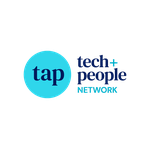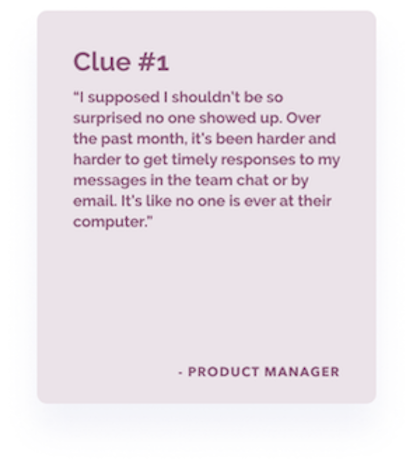Activity
-
TAP Network posted an articleApplying design thinking to employee UX work see more
The Mystery of the Absent Associates
Applying Design Thinking to Employee UX work
By Ceara Crawshaw (and Melissa McHenry) @ Pencil & Paper Experience Design
When Melissa and I started working together, I was a UX designer and she was an HR lead. As we got to know each other better, through discussions surrounding different scenarios at work, it became clear that our fields weren’t so different.
Being a UX designer means that I need to solve problems and come up with creative solutions using both research and experimentation. I use the exact same kind of interviewing skills as she does, we just have different approaches and end goals. We also have the overlapping mindset of being user-centred in what we do.
We discovered through many interesting conversations that certain HR initiatives would really benefit from the UX research approach and that it seemed like limitless possibilities were in front of us. What if we could take all of those positive HR initiatives and support them with research so that their adoption was more like the approach taken in developing products? What if we could extend this user-centred approach past specific initiatives to address culture overall?
Employee UX mysteries
We also wanted to figure out a nice way to talk about Employee UX and culture in a relatable way... so we explored the idea of helping people with their culture concerns in the format of mysteries…That’s how the Employee UX Mystery Series was born!
In the series, we chronicle your (fictional) neighborhood software company, Acme Co. as they navigate the trials and tribulations of a typical tech company. Throughout the series, they deal with issues around managing client expectations, missed deadlines and bad morale. The most recent cases focus more on situations that arise after a sudden shift in work styles: going remote. We expect you can relate!
Here we’ll share some deeper insights about our latest case, The Mystery of The Absent Associates. and how we apply design thinking to address this workplace challenge.
The story
Our entire team at Acme Co. has gone remote. The HR Lead and Product Manager plan a happy hour for employees where hardly anyone shows up. Upset, they vow to never even try this again, if people are going to be so flaky.
Then our team steps in to investigate and get to the bottom of the issue. Through open-ended interviews with team members, we uncover a series of clues:
What we see arise from these clues are some underlying issues that seem to be at the heart of the drama. Take a few of the clues as examples…
Further questions we’d ask when hearing something like this:
-
Are there communication mechanisms in place where people can report what they are working on, while still maintaining dedicated focus time?
-
Do people understand what is the best use of team chat vs. email?
-
Do you have specific guidelines created which would allow people to understand the expectations for communication channels? (email response = 24-48h, chat = same day)
-
-
Is there any communication strategies in the calendar or chat program which could help people understand each other’s schedules better?
-
Is your work organized in a way where you centralize the decisions (like in a project management software)?
Further questions we’d ask when hearing something like this:
-
This is a ‘knowledge work’ environment, so what’s the culture surrounding focus?
-
Is there a culture of mutual respect for one another’s time as well as their focus?
-
How can etiquette be communicated in a way where collaboration needs are met, and focus is sustained?
-
As a team, what is the main priority - fast responses or focused, productive time? (this will likely vary from function to function - for support teams, responses are very important, for development teams, creating code is very important which requires long, sustained focus).
Further questions we’d ask when hearing something like this:
-
Working remotely is a sudden shift in work style for many people - understanding each other's workflows is even more important when you can’t see each other.
-
How long has it taken other morale boosting initiatives to catch on in the past? Has it been immediate or has it taken some trial and error?
Further questions we’d ask when hearing something like this:
-
How do teams factor in email time into their workflow? For employer communications, what is the expectation around reading and responding to emails?
-
Is there a company-wide communication mechanism that could work better for team members?
-
Can things that are company-wide be distributed in a more efficient way? Perhaps a breakdown of decisions, general communication, strategic changes and processes need their own special treatment? Some things might be better as documentation, other things as intranet blog posts etc.
What did Acme Do?
Following the investigation, Acme decides to get their teams together and run some workshops to find solutions to their communication issues. Examples include: adding a chat status protocol (free/not free), optional meeting invitations and communicating meeting outcomes to people who choose not to attend and blocking off calendar times for taking in company communications.What else would we like to do in a situation like this?
This situation is a great design problem, because it involves a lot of conflicting factors and extra complexity: people aren’t used to communicating in a new way. Some ideas people come up with may or may not work in day-to-day life. This is why, if Acme Co. was real, we would take a prototyping approach - trying certain things for a limited period of time. Then we would measure how effective these changes were, and we’d reassess. This iterative approach is central to UX design work and could work well in this context. If the team was already trained in Agile, the ‘continuous improvement’ philosophy would likely complement this sort of approach.
Either way, we want to reflect the overall design process when doing Employee UX work by taking the following steps:
- Discover: interviews and other ux research
- Design/iterate: co-create new ways to work and more robust processes together as a team
- Measure: see if the new processes are working, create a hard and fast metric to measure and have a periodical check in to see if the ‘new design’ actually works
Conclusion
Culture issues can feel like a mystery to solve, especially when there are a lot of people in the equation. Applying the research/analysis phase before implementation of a new process seems to us like a very effective way to do things. More than that, it furthers our human-centred/employee-centred approach to crafting workplaces which are both fulfilling and meaningful as well as productive and healthy.
We're curious to hear your thoughts: would you solve the case the same way we would?
Our other cases:
-
The Case of the Vanishing Project
-
Themes: Product management and customer validation
-
-
The Case of the Rising Tensions
-
Themes: bringing on a new role, while keeping the workflow the same
-
-
The Case of the Tanking Team
-
Themes: change management, communication and workflow
-
-
The Case of the Absent Associates
-
Themes: employee engagement and communication after going remote
-
-
The Case of the Quitting Client
-
Themes: Internal communication including documentation and a single source of truth
-
-
The Case of the Splitting Recruits
-
About the onboarding process and the impact it can have on new team members
-
If you’re interested, you can read these Employee UX mysteries here.
Pencil & Paper is an experience design agency in Victoria, BC - specializing in user experience design for FinTech, BioTech, Startups and Employee UX. Our vision is to help companies orient themselves in this human-centred direction while using real information from employees themselves to create healthy workplaces.
HAVE AN ARTICLE YOU WANT TO SHARE? Click here to learn more about submitting a guest blog post.
-






